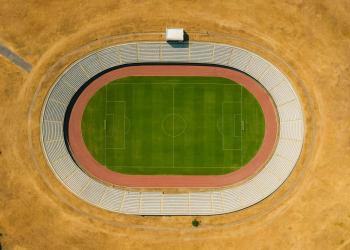The world of tennis is evolving beyond powerful serves and precise volleys. As awareness of climate change and environmental responsibility grows, tennis organizations, tournaments, and athletes are embracing greener practices to protect the planet.
Grand Slam tournaments are leading the way. Wimbledon has committed to becoming “Environment Positive” by 2030, with goals that include achieving an 85 percent recycling rate, eliminating landfill waste, and tracking carbon emissions to meet strict reduction targets. The US Open has been running sustainability programs for over 17 years, diverting significant amounts of greenhouse gases and composting hundreds of tons of food waste. The Australian Open and Roland Garros have implemented measures such as reusable hydration stations, biodegradable packaging, and reforestation projects to offset their environmental impact.
Institutional action is also accelerating. The International Tennis Federation’s sustainability strategy integrates environmental responsibility into every aspect of the sport, from event organization to infrastructure planning, in alignment with global climate objectives. Tennis Europe has introduced regional initiatives focusing on eco-friendly facilities, sustainable event management, and climate advocacy. The ATP Tour has released its first Sustainability Report, highlighting projects to reduce plastic usage, promote carbon tracking for players, and achieve substantial emissions cuts by 2030 and 2040.
Players are also stepping up. Professional athletes are rethinking their travel schedules, recycling sports equipment, and using their platforms to promote environmental awareness. Programs like the ATP’s Carbon Tracker encourage competitors to measure and offset their own carbon footprint.
One of tennis’s most persistent environmental challenges remains the tennis ball. An estimated 330 million balls are produced each year, most of which end up in landfills, where they can take centuries to decompose. Innovative recycling programs are working to collect and repurpose used balls into new materials for court surfaces and sports equipment.
From grassroots clubs to elite tournaments, the message is clear: sustainability in tennis is no longer optional. It is a shared responsibility that blends performance with environmental stewardship, ensuring the sport thrives in harmony with the planet for generations to come.



















